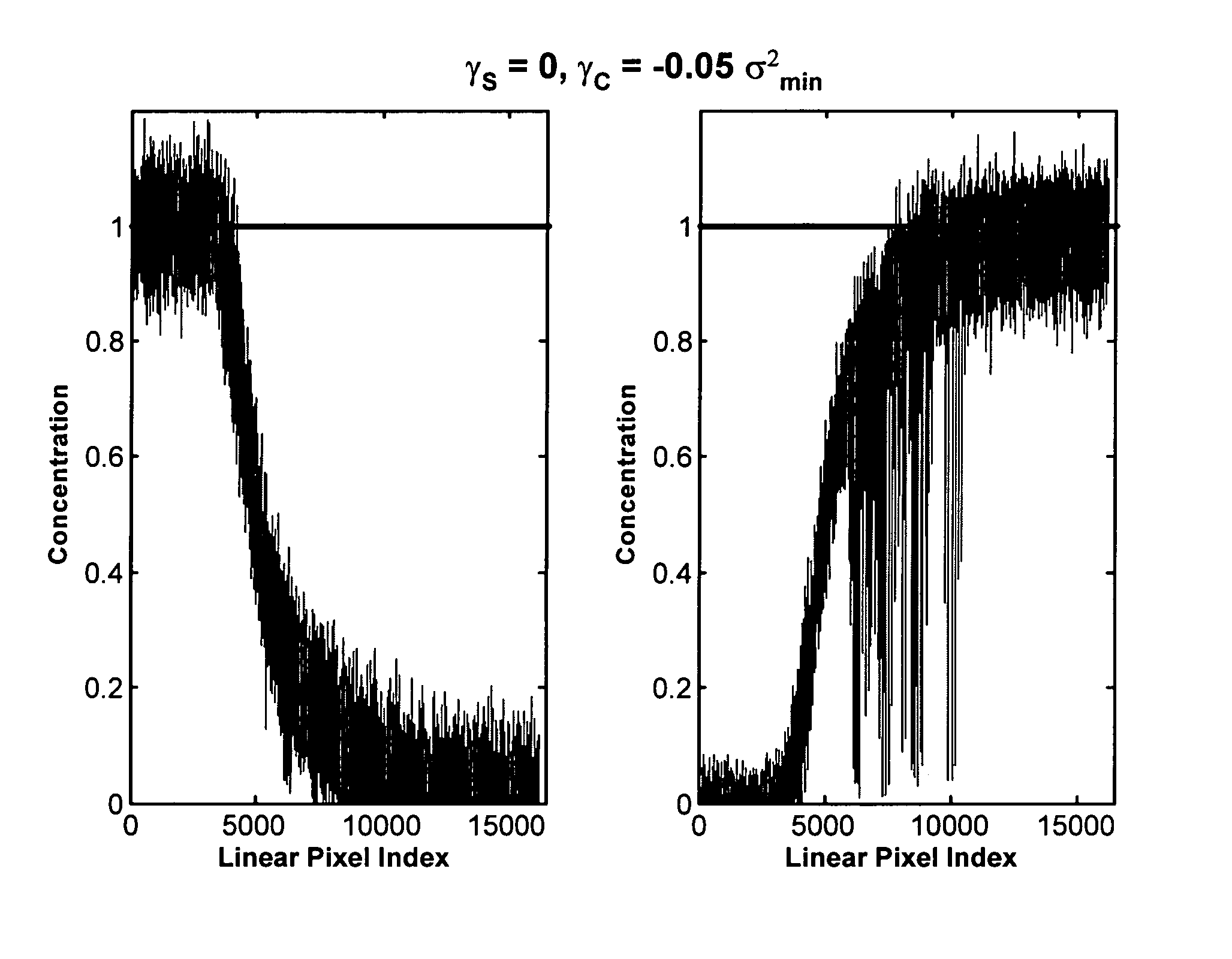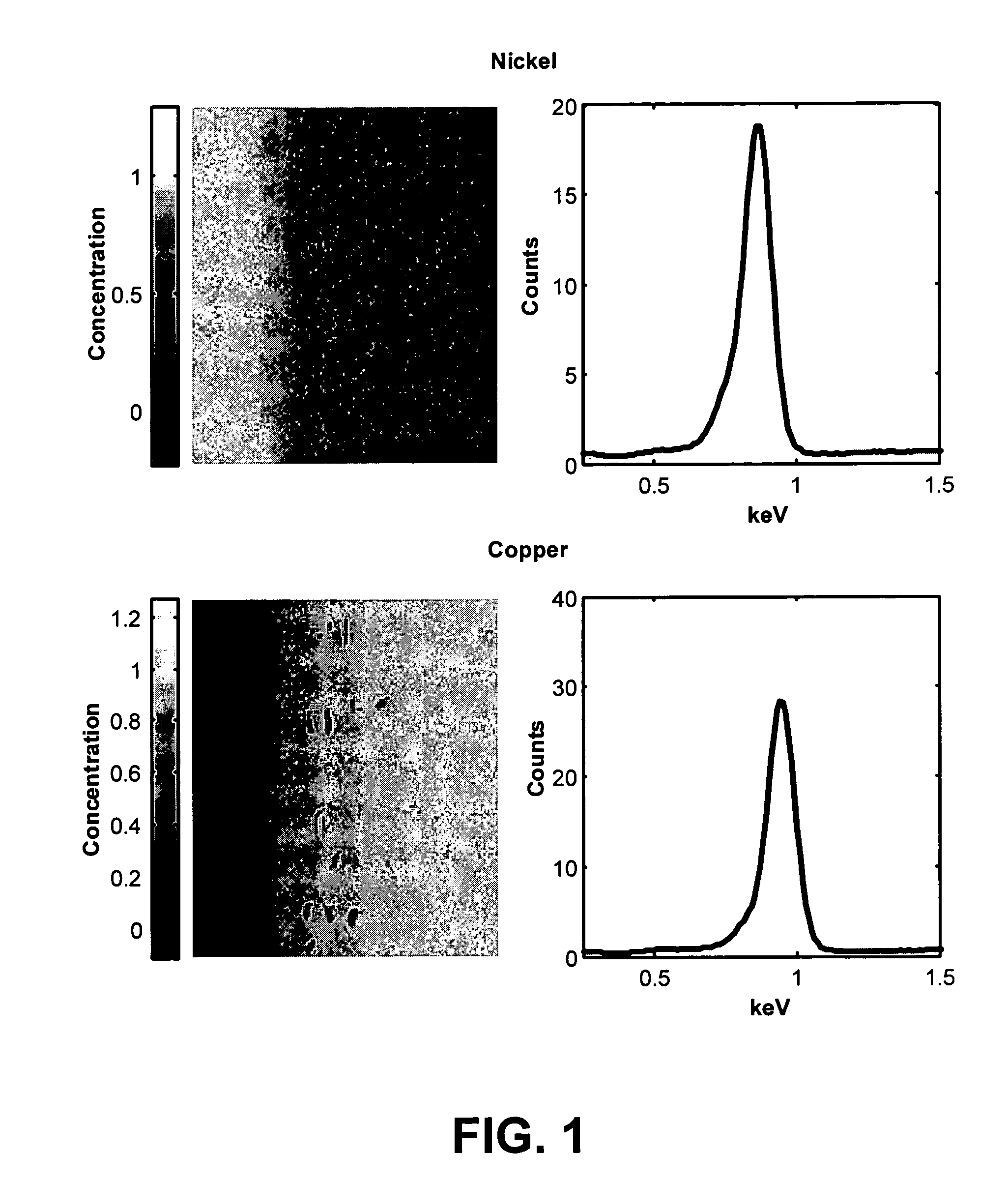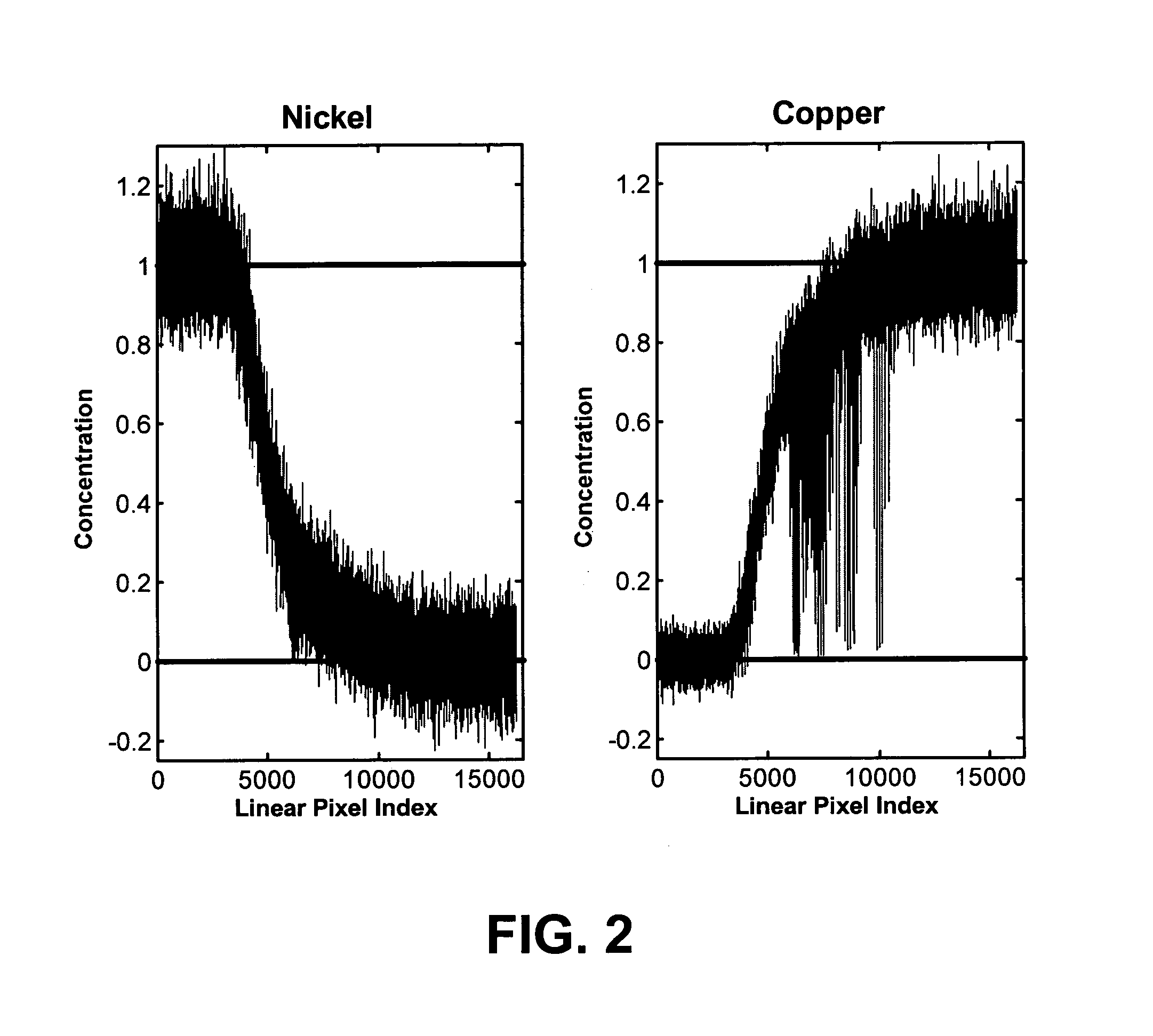Method for exploiting bias in factor analysis using constrained alternating least squares algorithms
a factor analysis and factor analysis technology, applied in the field of multivariate statistical techniques, can solve problems such as less than optimal, and achieve the effect of increasing or decreasing component contras
- Summary
- Abstract
- Description
- Claims
- Application Information
AI Technical Summary
Benefits of technology
Problems solved by technology
Method used
Image
Examples
Embodiment Construction
[0027]Factor analysis comprises a family of multivariate statistical techniques that attempt to distill high-dimensional data into a limited number of components that retain the essential information pertinent to an underlying model. Factor analysis has a long history in the social sciences and has also proven effective for solving a variety of chemical problems. See, e.g., H. H. Harman, Modern Factor Analysis, The University of Chicago Press, Chicago (1976) and E. R. Malinowski, Factor Analysis in Chemistry, John Wiley & Sons, New York (2002).
[0028]In mathematical terms, factor analysis methods seek to decompose a data matrix D into a product of matrix factors that describe all of the relevant information contained in D in physically meaningful terms. For example, in a spectroscopic experiment which adheres to Beer's Law, D is an m×n matrix containing spectroscopic data (e.g. an n-channel spectrum at each of m pixels in a spectrum image) and we wish to estimate factor matrices C an...
PUM
| Property | Measurement | Unit |
|---|---|---|
| spectroscopic data | aaaaa | aaaaa |
| concentrations | aaaaa | aaaaa |
| concentration | aaaaa | aaaaa |
Abstract
Description
Claims
Application Information
 Login to View More
Login to View More - R&D
- Intellectual Property
- Life Sciences
- Materials
- Tech Scout
- Unparalleled Data Quality
- Higher Quality Content
- 60% Fewer Hallucinations
Browse by: Latest US Patents, China's latest patents, Technical Efficacy Thesaurus, Application Domain, Technology Topic, Popular Technical Reports.
© 2025 PatSnap. All rights reserved.Legal|Privacy policy|Modern Slavery Act Transparency Statement|Sitemap|About US| Contact US: help@patsnap.com



